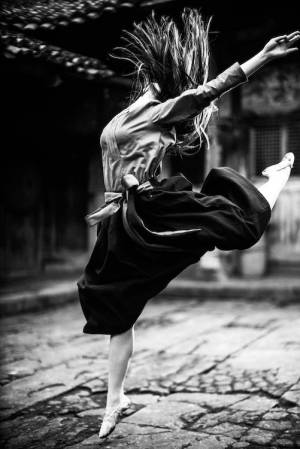 Dance is a timeless form of expression that captivates audiences and evokes powerful emotions. In recent years, Artificial Intelligence (AI) has found its way into the world of dance, revolutionizing the way we create, learn, and experience this art form. In this blog post, we will explore the exciting intersection of AI and dance, examining how AI is reshaping choreography, performance, and dance education.
Dance is a timeless form of expression that captivates audiences and evokes powerful emotions. In recent years, Artificial Intelligence (AI) has found its way into the world of dance, revolutionizing the way we create, learn, and experience this art form. In this blog post, we will explore the exciting intersection of AI and dance, examining how AI is reshaping choreography, performance, and dance education.
Choreography Assistance: AI algorithms can assist choreographers in generating new movement ideas and expanding their creative repertoire. By analyzing vast amounts of dance data and movement patterns, AI can provide choreographic suggestions, inspire novel combinations, and help artists break free from creative blocks. This collaborative approach between human choreographers and AI algorithms sparks innovative choreographic possibilities.
Movement Analysis and Enhancement: AI-powered motion capture systems can precisely capture dancers’ movements and analyze their techniques. This data-driven approach provides valuable insights into body mechanics, alignment, and performance quality. AI algorithms can identify areas for improvement, offer personalized feedback, and help dancers refine their skills. By harnessing AI for movement analysis, dancers can enhance their technique and reach new levels of artistry.
Interactive Performances: AI technologies can create interactive dance performances that respond to the audience’s presence and input. Through the use of sensors, cameras, and machine learning algorithms, dancers can engage in real-time interactions with their surroundings. These interactive performances blur the boundaries between performer and observer, offering immersive and participatory experiences that captivate and inspire.
Dance Education and Training: AI-powered platforms can enhance dance education and training programs. AI algorithms can analyze dancers’ movements and provide personalized feedback, enabling students to receive individualized guidance and support. Virtual reality (VR) and augmented reality (AR) technologies combined with AI can create virtual dance studios, allowing students to practice and learn in immersive and safe environments.
Choreographic Pattern Recognition: AI algorithms can recognize and analyze choreographic patterns, allowing for automated notation and documentation of dance sequences. This technology simplifies the choreographic process, facilitates communication between choreographers and dancers, and preserves choreographic works for future generations. AI-powered pattern recognition contributes to the evolution and preservation of dance as an art form.
Collaboration between Dance and Technology: AI encourages collaborations between dancers and technologists, fostering a fusion of artistic expression and technological innovation. Dancers and AI experts can explore new possibilities for performance, incorporating cutting-edge technologies like AI-generated visuals, wearable sensors, and interactive environments. These collaborations push the boundaries of what is possible in dance, creating mesmerizing and groundbreaking experiences.
Creating New Movement Languages: AI algorithms can generate new movement languages by analyzing diverse dance styles and synthesizing unique combinations. By exploring the potential of AI-generated movements, dancers can push the boundaries of traditional techniques, challenge conventions, and explore new artistic territories. This fusion of AI and dance opens up a realm of experimentation and innovation in movement expression.
The fusion of AI and dance opens up a world of possibilities, transforming choreography, performance, and dance education. From choreography assistance and movement analysis to interactive performances and collaborative endeavors, AI enhances the creative process and expands the horizons of dance. Embracing AI in dance invites us to re-imagine movement, push artistic boundaries, and engage in thrilling collaborations that bridge the gap between human expression and technological innovation. As AI continues to evolve, its impact on the world of dance promises to be even more profound, ushering in a new era of creativity and artistic exploration.